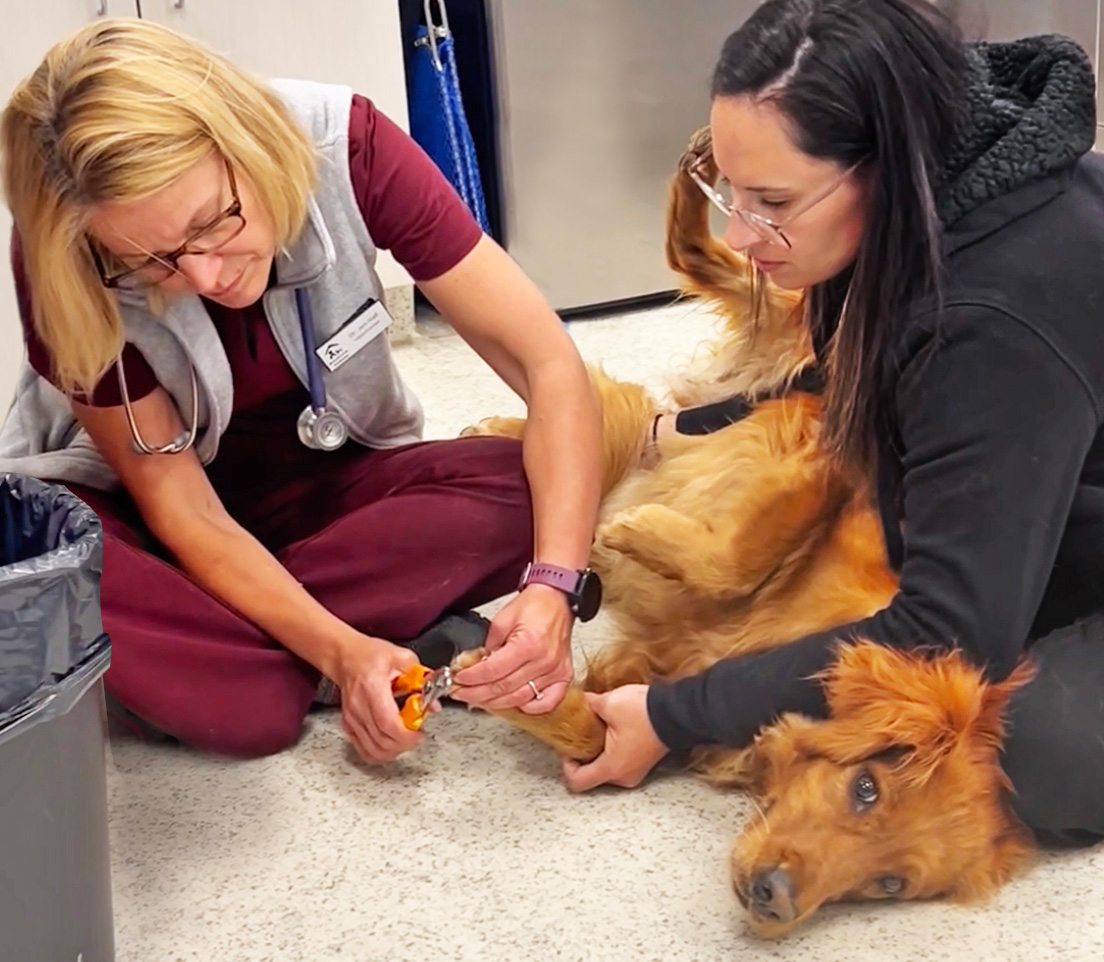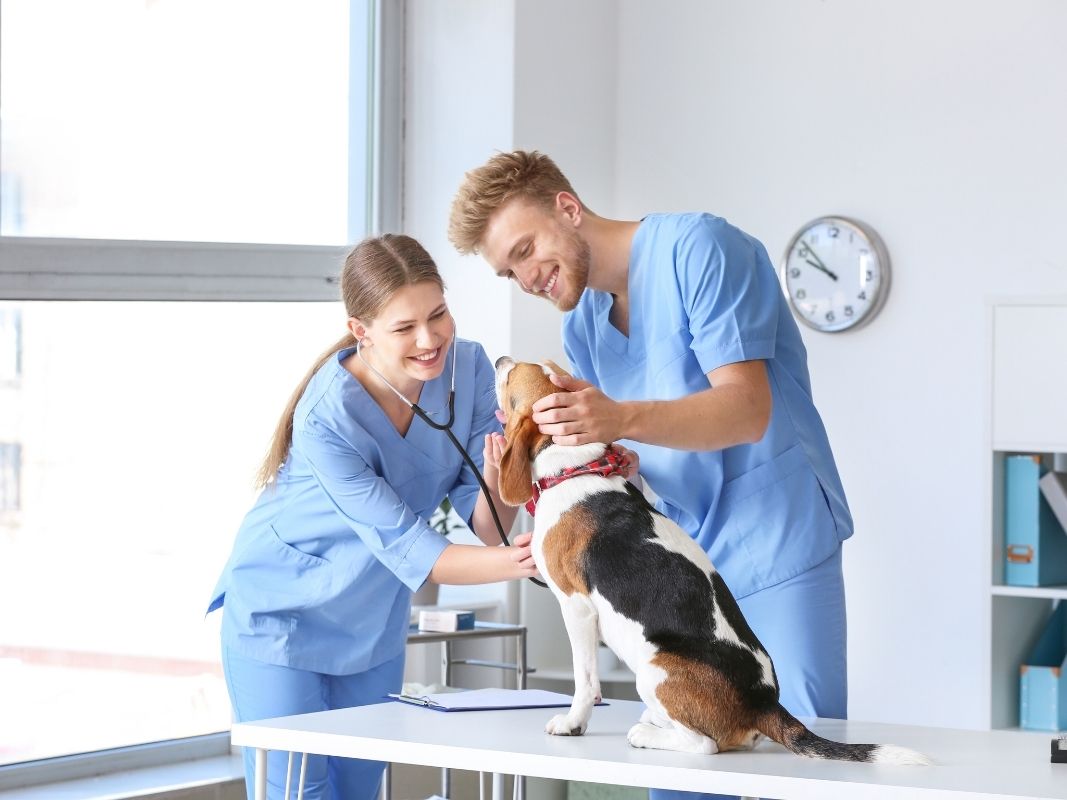Signs Your Pet's Condition Is Serious Enough for an emergency vet
Signs Your Pet's Condition Is Serious Enough for an emergency vet
Blog Article
Everything About Vet Surgical Procedure: Comprehending the Importance of Expert Treatment for Your Pet dogs
Veterinary surgery is an essential part of family pet health care. It includes various procedures, from regular optional surgical procedures to immediate treatments. Comprehending the details of these surgical treatments can assist pet dog proprietors make informed choices. The preparation, implementation, and healing phases are important for making sure the health of pets. With correct knowledge, proprietors can navigate the intricacies of vet treatment. What factors should be thought about prior to an animal goes through surgery?
Kinds Of Vet Surgeries
When a family pet requires medical intervention, comprehending the numerous kinds of veterinarian surgical treatments can assist animal proprietors make notified decisions. Vet surgical treatments can be generally classified right into 3 primary types: optional, immediate, and emergency situation surgical procedures. Elective surgeries, such as spaying or neutering, are planned procedures that are not promptly lethal. Urgent surgical procedures, like those for international body elimination, have to be performed soon yet are not dangerous in the minute. Emergency surgical procedures, such as those resolving severe trauma or inner blood loss, are essential and require prompt attention.Additionally, surgical procedures can differ in intricacy, varying from minimally invasive laparoscopic procedures to more comprehensive open surgical procedures. Each sort of surgery lugs its very own dangers and healing processes. Understanding these classifications permits pet proprietors to engage in meaningful conversations with vets, resulting in far better results for their cherished animals.
Preparing for Your Pet dog's Surgery
Getting ready for a pet's surgical treatment involves a detailed checklist to assure all basics are covered. Effective communication with the vet is essential for understanding the treatment and any type of essential pre-operative steps - canine tplo surgery. Additionally, having clear post-operative care directions will help owners give the very best assistance for their recuperating family pets
Pre-Surgery List Fundamentals
Assuring a smooth surgical experience for an animal requires cautious preparation and focus to detail. A pre-surgery checklist is essential for animal owners to comply with. Confirming the set up surgical procedure date and time is essential. Owners must likewise confirm that their pet dog has actually not eaten according to the vet's instructions, typically for 8-12 hours prior to surgical treatment. Collecting required medical documents, consisting of inoculation background, is essential for the vet's review. It is also a good idea to prepare a comfy area in your home for the animal's recovery after surgical procedure. Finally, owners need to have a plan for transportation to and from the vet clinic, ensuring that the pet is secure and comfortable throughout the trip. Following these actions can substantially boost the surgical experience.
Communicating With Your Vet

Efficient interaction with the vet is crucial for an effective surgical experience for family pets. Proprietors need to be prepared to discuss their family pet's clinical history, including any type of pre-existing conditions, drugs, and allergic reactions. This info helps the veterinarian assess risks and customize the medical plan accordingly. Furthermore, pet dog proprietors should ask questions relating to the treatment, anesthetic, and anticipated outcomes to ensure they fully comprehend the process. Clearing up any type of uncertainties can reduce stress and anxiety for both the family pet and the owner. It is also important to interact any kind of behavioral modifications or problems observed in the pet dog leading up to the surgical treatment. Ultimately, clear dialogue fosters trust fund and cooperation, ensuring that animals receive the ideal feasible care throughout their surgical journey.
Post-Operative Treatment Directions
After talking about the medical treatment with the vet, animal proprietors should concentrate on post-operative treatment directions to help with a smooth recovery for their animals. These guidelines commonly include checking the surgical website for indicators of infection, such as soreness or discharge. Animals may require to be kept one's cool and restricted to stop extreme activity that could disrupt healing. Discomfort monitoring is essential, so owners must comply with the veterinarian's support on providing medications. Additionally, dietary limitations might be recommended to avoid intestinal distress. Routine follow-up appointments are very important to guarantee appropriate healing and address any worries. By adhering to these post-operative treatment directions, family pet proprietors can substantially add to their animal's healing and general wellness.
The Surgery Explained
The surgery for pets includes crucial steps that assure their safety and recovery. Pre-surgery prep work are important for decreasing threats, while post-operative care guidelines play a vital function in advertising recovery. Comprehending these parts aids pet dog owners browse the medical experience a lot more properly.
Pre-Surgery Preparations
Prior to a pet undergoes surgical procedure, a number of important preparations need to occur to guarantee a secure and effective procedure. A thorough veterinary examination is vital to analyze the family pet's overall health and wellness and identify any kind of prospective risks. This might include blood tests, imaging, or various other diagnostics. The veterinarian will likewise discuss anesthesia options customized to the family pet's details demands. In addition, pet dog owners are normally advised to withhold food and water for a defined time prior to surgical treatment to decrease the danger of difficulties throughout anesthetic. It is necessary for proprietors to provide a full medical background, consisting cat illnesses of any type of medications or allergic reactions, making sure the surgical team has all needed info. Proper communication and adherence to pre-surgery guidelines can significantly improve the outcome of the treatment.
Post-Operative Care Standards
Correct post-operative treatment is crucial for guaranteeing a family pet's recovery adhering to surgery. After the treatment, animals need to be kept an eye on very closely for any indicators of difficulties, such as excessive bleeding, swelling, or uncommon actions. It is necessary to adhere to the vet's directions regarding medications, consisting of painkiller and prescription antibiotics. Family pets need to be maintained in a silent, comfy setting to decrease stress and anxiety and advertise recovery. Limiting activity is vital; short, leashed walks might be required, but jumping or running need to be prevented. Normal follow-up consultations need to be arranged to evaluate the healing procedure. In addition, the surgical site has to be maintained clean and dry, with any kind of indicators of infection reported to a veterinarian without delay. Following these standards improves recuperation outcomes.
Anesthesia and Pain Monitoring
Efficient anesthesia and pain monitoring are important elements of veterinary surgical procedure, making certain that animals remain comfortable and safe throughout the procedure. Veterinarians evaluate each family pet's individual needs, thinking about factors such as age, weight, health and wellness standing, and the sort of surgical procedure being performed.Anesthesia procedures generally consist of a combination of pre-anesthetic medications, induction agents, and inhalant anesthetics, enabling for exact control over the pet's level of awareness. Tracking during surgery is critical; veterinarians constantly observe crucial indicators to attend to any kind of possible difficulties promptly.Pain administration techniques may entail opioids, non-steroidal anti-inflammatory drugs (NSAIDs), and local anesthetics, tailored to the pet dog's details scenario. This multifaceted method assists minimize pain and advertises a smoother medical experience. By prioritizing efficient anesthesia and discomfort monitoring, vet professionals enhance the overall welfare of pets undergoing surgeries, guaranteeing they obtain the greatest requirement of treatment.
Post-Operative Care and Healing
Following surgery, the emphasis shifts to post-operative treatment and recuperation, which is essential for ensuring an animal's safe go back to typical tasks. During this duration, pets call for a peaceful, comfortable setting to aid healing. Owners ought to very closely check their pets for any kind of indications of discomfort or uncommon behavior.Veterinary guidelines often include particular directions associated with medicine management, injury care, and nutritional modifications. It is essential to abide by these recommendations to decrease problems and promote healing. Family pets may need to be limited from strenuous tasks, such as running or jumping, during their recovery period (emergency vet).Regular follow-up visits with the veterinarian enable surveillance of the pet's development and prompt adjustments to the treatment plan. Providing emotional assistance and friendship can likewise boost an animal's healing experience, assisting to relieve stress and anxiety and anxiousness. In general, attentive post-operative care plays a substantial role in accomplishing an effective healing
Acknowledging Issues After Surgical Treatment
Exactly how can pet dog owners identify complications after surgical procedure? Understanding of specific indications is essential for guaranteeing the well-being of animals throughout recuperation. Common signs include too much swelling, soreness, or discharge at the medical website, which may represent infection. Additionally, consistent pain, shown by whining or hesitation to relocate, should motivate immediate focus. Modifications in hunger or water intake can also show problems; a local veterinarians decline in these habits might signify discomfort or distress.Moreover, family pet owners need to monitor their pets for any type of unusual habits, such as lethargy or trouble breathing, as these can be signs of major problems. Throwing up or diarrhea following surgical treatment might need immediate vet evaluation. Acknowledging these difficulties early can significantly influence a family pet's recuperation procedure, highlighting the importance of vigilance and punctual interaction with a vet for any type of worrying symptoms.
The Role of Veterinary Professionals in Surgical Treatment
Veterinary professionals play a crucial duty in making sure the safety and security and success of surgeries for pet dogs, particularly following surgical treatment when keeping track of and care are critical. These experts consist of vets, vet technicians, and support team, all of whom contribute specialized abilities to the surgical process.Before surgical procedure, veterinarians carry out complete examinations to evaluate the pet's health and wellness, making sure that any underlying problems are managed. Throughout the treatment, the medical team gives anesthetic, keeps sterilized atmospheres, and monitors crucial indicators, all vital for lessening risks.Post-operative care is just as significant; veterinary experts observe for difficulties, handle pain, and guide proprietors on recovery techniques. Their proficiency enables them to identify very early signs of distress or infection, making certain prompt intervention. Ultimately, the collaborative initiatives of veterinary specialists in medical treatment foster a secure setting, advertising the well-being of family pets throughout the medical trip.

Often Asked Inquiries
Exactly how Do I Select the Right Veterinary Specialist for My Pet?
Choosing the best vet cosmetic surgeon includes looking into qualifications, checking out testimonials, and assessing the center's setting. It is necessary to review the cosmetic surgeon's experience with certain treatments animal hospital veterinary and their interaction style when deciding.
What Prevail Misconceptions Concerning Veterinarian Surgeries?
Usual false impressions concerning veterinarian surgeries include ideas that they are constantly high-risk, unneeded, or for emergency situations. Numerous pet proprietors underestimate the advantages of precautionary treatments and the skill included in vet surgical care.
Just How Much Will My Pet's Surgery Cost?
The cost of a pet's surgical procedure can vary significantly based on variables such as the sort of treatment, the vet's experience, and geographic place (canine tplo surgery). Normally, costs range from a few hundred to a number of thousand bucks

Can My Pet Dog Eat Before Surgical Procedure?
Prior to surgery, it is usually suggested that pet dogs avoid from consuming for a details duration. This fasting helps in reducing the risk of complications throughout anesthesia. Owners should consult their vet for exact directions customized to their pet dog's needs.
What happens if My Pet Has Pre-Existing Health Issues?
When a pet dog has pre-existing health and wellness conditions, it's important for the veterinarian to analyze these aspects before surgery. This examination assurances ideal safety measures are taken, minimizing risks and enhancing the pet dog's total safety and security throughout the procedure.
Report this page